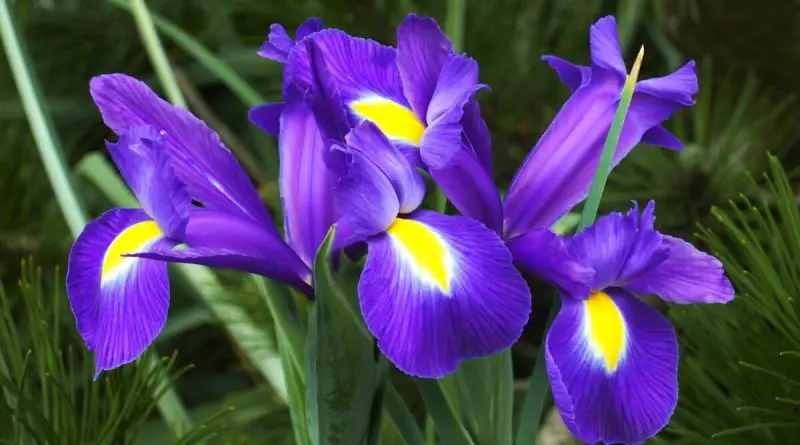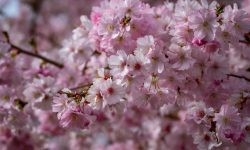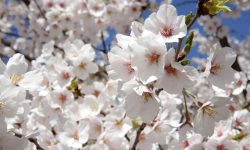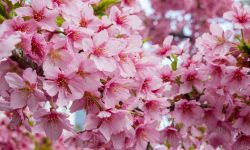Irises are among the most admired flowering plants in gardens worldwide, cherished for their exquisite and colorful blooms. They symbolize hope, wisdom, and elegance, and when thriving, they can transform any outdoor space into a visual masterpiece. However, a common challenge many gardeners face is when their irises grow healthy green leaves but stubbornly refuse to bloom. This issue can be confusing and disappointing, especially if you’ve nurtured your irises carefully. Understanding why irises may not bloom and learning how to address the underlying causes can significantly improve your chances of enjoying these spectacular flowers every season.
In this article, we will delve deeply into the various factors that affect iris blooming, ranging from environmental conditions, soil quality, planting techniques, to care routines. Additionally, practical advice and expert tips will be shared to help you encourage healthy and abundant blooms. Whether you are a beginner gardener or a seasoned horticulturist, this comprehensive guide will assist you in unlocking the full blooming potential of your irises.
Understanding the Growth Cycle of Irises

Before exploring the reasons for non-blooming, it is essential to understand the natural growth and blooming cycle of irises. Most iris varieties are rhizomatous perennials, meaning they grow from thick underground stems called rhizomes. These rhizomes spread horizontally just beneath or slightly above the soil surface and give rise to shoots, leaves, and eventually flowers.
Irises typically undergo a period of active growth in spring when temperatures warm up, followed by flowering in late spring or early summer depending on the species and local climate. After blooming, the plants enter a phase of seed formation and energy storage, preparing for dormancy during hot summer months or winter cold.
The blooming process is energy-intensive. The plant needs sufficient nutrients, sunlight, and favorable environmental conditions to allocate energy toward flower production rather than just leaf growth. When these conditions are suboptimal, irises may prioritize foliage development or go into survival mode, leading to little or no flowering.
Common Environmental Factors Affecting Iris Blooming
Insufficient Sunlight
One of the most critical factors influencing iris blooming is the amount and quality of sunlight the plants receive. Irises are sun-loving plants, thriving best in full sun conditions where they receive at least six hours of direct sunlight daily. Sunlight drives photosynthesis, the process through which plants create the energy necessary for growth and flowering.
When irises are grown in shaded areas or under the canopy of taller plants, trees, or structures, their ability to bloom is significantly reduced. The lack of sufficient light causes the plants to grow elongated, pale leaves as they stretch toward the light source, but flowers fail to develop. In some cases, partial shade may be tolerated, especially for certain species, but prolonged or dense shade almost guarantees poor blooming.
Overcrowding and Competition
Irises propagate by spreading their rhizomes, and over time, the clumps can become densely packed. Overcrowding is a common problem in iris beds, especially if the plants have not been divided regularly. When rhizomes compete for limited nutrients, water, and space, the vigor of individual plants decreases. This crowding also restricts airflow around the plants, creating a humid environment favorable to diseases.
Crowded rhizomes lead to smaller, fewer flowers or none at all. The stress from competition forces the plants to conserve resources, diverting energy toward survival instead of reproduction through flowering. This situation is often overlooked because the iris foliage may still appear lush and healthy, misleading gardeners into thinking the plants are thriving.
Soil Conditions and Drainage
Soil type and drainage quality are vital to iris health and bloom production. Irises prefer well-draining soil that does not remain soggy after rain or irrigation. Excess water causes rhizomes to rot, weakening the plants and preventing flowering.
Heavy clay soils or poorly drained garden beds pose a risk to irises. Waterlogged soil deprives roots of oxygen, causing root suffocation and decay. Conversely, soils that are too sandy or nutrient-poor may not provide the minerals necessary to support flower formation.
Additionally, soil pH affects nutrient availability. Irises generally flourish in neutral to slightly acidic soil (pH 6.0 to 7.0). If the soil is too acidic or alkaline, essential nutrients like phosphorus, which promotes flowering, may become unavailable to the plants.
Planting Depth and Technique
The way irises are planted also influences their ability to bloom. Unlike many plants, iris rhizomes should be planted shallowly, with their tops just barely covered by soil or slightly exposed. When planted too deep, the rhizomes struggle to send up flower stalks, resulting in no blooms.
Planting irises at the wrong depth also impacts soil moisture around the rhizomes. Shallow planting helps keep rhizomes dry and prevents rot, whereas deep planting traps moisture and encourages fungal diseases.
Temperature and Climate
Irises have varying hardiness depending on the species and cultivar. Some irises are adapted to cooler climates and require a cold dormant period to bloom, while others prefer milder winters. Unusually warm winters or late frosts can disrupt the plant’s growth cycle and delay or prevent blooming.
Extreme heat, drought, or fluctuating weather conditions can stress irises and inhibit flower production. For gardeners in hotter regions, providing some afternoon shade or extra mulch may help protect irises from heat stress.
Nutritional Factors Influencing Blooming
Imbalanced Fertilization
Fertilizer plays a crucial role in encouraging iris blooms, but improper use can be detrimental. Irises require a balanced supply of nutrients, especially phosphorus and potassium, which support flower bud development and root health.
Excessive nitrogen application, however, encourages lush leaf and stem growth at the expense of flowers. Many gardeners mistakenly apply high-nitrogen fertilizers to irises, resulting in vigorous foliage but no blooms.
A fertilizer with a balanced ratio such as 10-10-10 or one slightly higher in phosphorus (e.g., 5-10-10) applied at the right time can stimulate flowering. Over-fertilization can also cause salt buildup in the soil, damaging roots and reducing blooming potential.
Timing of Fertilization
When you fertilize irises is as important as what fertilizer you use. Applying fertilizer in early spring, just as new growth begins, provides the plants with nutrients to develop strong shoots and flower buds. Another application immediately after flowering helps replenish nutrients and supports next season’s growth.
Avoid fertilizing irises in late summer or fall, as this can encourage tender new growth that is susceptible to winter damage and does not contribute to blooming.
Proper Watering for Flower Production
Watering practices significantly impact iris health and flowering. While irises need moisture to grow, overwatering or inconsistent watering can cause problems.
During the active growing season, irises benefit from regular watering to keep the soil moist but not saturated. Excess water, especially around the rhizomes, invites rot and fungal infections, which impair bloom development.
In dry or drought conditions, lack of water stresses the plant, reducing its energy reserves and flower production. A deep, thorough watering once a week during dry spells is ideal, allowing the soil to dry slightly between watering to prevent waterlogging.
How to Encourage Irises to Bloom: Practical Steps
Choose the Right Location
Start by selecting a planting site with full sun exposure. If your irises are currently in a shady spot, consider transplanting them to a sunnier area. The ideal location should receive at least six hours of direct sunlight, preferably more. Good sunlight promotes photosynthesis and flower bud initiation.
Divide and Replant Overcrowded Rhizomes
Every three to four years, it is important to divide iris clumps to prevent overcrowding. Carefully dig up the rhizomes, separate healthy sections, and discard old or diseased parts. Replant the divisions with enough space—usually about 12 to 18 inches apart—to allow airflow and nutrient availability.
When replanting, ensure rhizomes are positioned just below or at the soil surface. Lightly firm the soil around the rhizomes but avoid covering them deeply.
Improve Soil Quality and Drainage
Amend heavy soils with organic matter such as compost, aged manure, or peat moss to improve texture and drainage. For gardens with poor drainage, consider creating raised beds to elevate the irises and prevent water accumulation.
Test your soil pH using a kit available at garden centers. If the pH is outside the ideal range (6.0 to 7.0), adjust it with lime to raise pH or sulfur to lower it. Balanced soil pH enhances nutrient uptake and flowering.
Apply Appropriate Fertilizers
Use a fertilizer formula designed for flowering plants, emphasizing phosphorus and potassium content. Apply fertilizer in early spring when new growth begins and again after blooming. Avoid high-nitrogen fertilizers that promote foliage over flowers.
Organic fertilizers like bone meal or rock phosphate can also be beneficial for providing phosphorus.
Manage Watering Carefully
Maintain a consistent watering schedule during the growing season. Water deeply but allow the soil to dry out between watering sessions. Avoid overhead watering to reduce fungal diseases. Mulching can help retain soil moisture but keep mulch away from rhizomes to prevent rot.
Protect From Pests and Diseases
Keep an eye out for common iris pests such as iris borers and diseases like bacterial soft rot or fungal leaf spots. Removing dead or diseased foliage promptly and practicing good garden sanitation help reduce infections. Use insecticides or fungicides as necessary, following product instructions carefully.
Prune After Blooming
After your irises finish blooming, remove spent flower stalks to prevent seed formation, which can sap the plant’s energy. Also, trim back dead or yellowing leaves to maintain plant health and reduce disease risk.
Understanding Iris Varieties and Their Blooming Patterns
Different types of irises have unique growth and blooming habits. Bearded irises are among the most popular and tend to bloom in late spring to early summer. Siberian and Japanese irises bloom slightly later and prefer moister conditions. Louisiana irises thrive in wetlands and bloom in early summer.
Some varieties may take a couple of years after planting before they produce substantial blooms. Knowing your iris type and its requirements helps set realistic expectations and care plans.
Common Mistakes That Prevent Iris Blooming
Many gardeners unknowingly contribute to poor iris blooming by making avoidable errors. Overwatering or planting rhizomes too deeply are frequent mistakes. Using high-nitrogen fertilizers exclusively or failing to divide overcrowded rhizomes can also hinder flower production.
Ignoring sunlight needs by placing irises in shaded or dense areas often results in lush foliage but no flowers. Lastly, neglecting pest and disease control reduces the overall vigor of the plant, affecting bloom quality.
When to Expect Irises to Bloom After Corrective Care
After adjusting growing conditions and care routines, irises may take one or two growing seasons to respond fully. Patience is essential, especially if plants were stressed or poorly maintained before. Regular division, proper fertilization, and optimal sunlight will gradually restore your irises’ blooming potential.
Once healthy, irises will reward you with vibrant, fragrant blooms that can last several weeks and provide year-after-year beauty in your garden.
FAQs About Why Irises Are Not Blooming
Why are my irises growing leaves but not blooming?
Irises often produce lush leaves without flowers due to insufficient sunlight, overcrowded rhizomes, or improper fertilization. Ensuring full sun exposure, dividing clumps, and using the right fertilizer can promote blooming.
How much sunlight do irises need to bloom well?
Most irises require at least six hours of direct sunlight daily to bloom optimally. Lack of adequate sunlight can cause the plants to focus on foliage growth rather than flower production.
Can overcrowding prevent my irises from blooming?
Yes, overcrowded iris rhizomes compete for nutrients and space, which weakens the plants and reduces blooming. Dividing and replanting every 3-4 years helps maintain healthy flower production.
What kind of fertilizer helps irises bloom?
A balanced fertilizer with higher phosphorus and potassium content, such as 10-10-10 or 5-10-10, encourages flower development. Avoid excessive nitrogen fertilizers as they promote leaf growth over flowers.
How deep should I plant iris rhizomes?
Iris rhizomes should be planted shallowly, with the tops just below or slightly above the soil surface. Planting too deep can prevent flower stalks from emerging.
How long after fixing conditions will my irises bloom?
After improving sunlight, soil, and care, irises typically respond within one to two growing seasons. Patience and consistent care are key to restoring blooms.
Conclusion
The question “Why are my irises not blooming?” is a common concern with many possible answers. By understanding the complex interplay of sunlight, soil, watering, fertilization, planting technique, and plant health, you can identify the root causes of non-blooming and take targeted action.
Encouraging healthy blooms requires consistent attention to your irises’ needs: ensure full sun exposure, prevent overcrowding through regular division, improve soil drainage and nutrient balance, and manage watering carefully. Protect your irises from pests and diseases while pruning after flowering to maintain vigor.
With knowledge, care, and patience, your irises will flourish and bloom beautifully, becoming a cherished highlight of your garden for many seasons to come.






